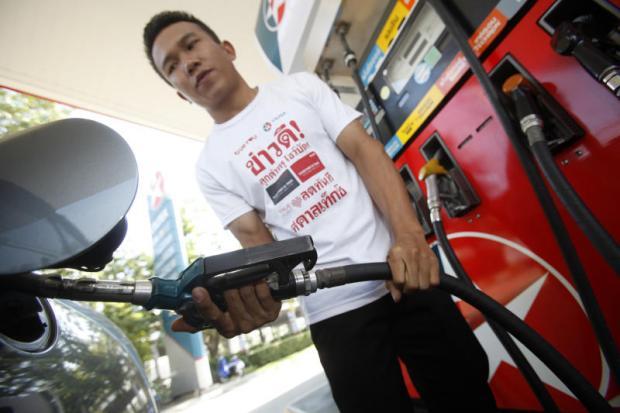
RORO or CORO? Caltex is doing a feasibility study to find a better retail oil business model to help it cope with the intense market competition. THANARAK KHUNTON
Caltex Thailand Co is conducting a feasibility study to find a better oil retail business model amid fierce market competition, says Boonyarit Srionkong, manager for policy and public affairs.
Generally, the oil retail business is operated on two models. Under the first model, the oil company operates the petrol station and owns the assets. With the second model, the station and its entire assets are owned by the retailer, an investor who buys the oil from a certain oil company, uses its brand and participates in its marketing campaigns.
Currently almost all of Caltex petrol stations are owned and run by investors under the retailer-owned, retailer-operated, or RORO, model. Only 3-4% of its total of 375 stations are owned and operated Caltex itself, under the company-owned, retailer-operated scheme, or CORO.
"We want to know if we increase the number of stations we own and run ourselves to be equal to the number of our RORO stations, this will improve our business margin, corporate image and market share," said Mr Boonyarit.
Caltex has allocated 640 million baht to build new petrol stations and renovate existing ones once the study is finalised.
Mr Boonyarit said the local petrol station business has been getting tougher over the past decade, forcing all players to keep adapting their strategies.
Most major oil companies use both models even though the CORO model allows the oil company full control of the business. But this model requires huge capital for expansion, whereas the RORO scheme enables them to increase their station network much quicker. But the risks for investor-owned stations are safety standards and oil quality.
"We have to admit the investors who run their petrol stations are doing a good job, and as they are local people, they know what their clients need. But we have to keep looking for ways to improve our business," said Mr Boonyarit.
This year Caltex plans to have 30 more new stations, at 20 million baht each excluding land price, and all to be run under the RORO model. The company also plans to revamp and modernise 20 existing stations, at 2 million baht each. Mr Boonyarit said 60% of its petrol stations had been renovated in the past two years.
Caltex expects its retail oil sales volume to grow 6% this year, ahead of 4-5% market average estimated by energy policymakers. Last year, Caltex reported sales of 500 million litres, a 5% growth from a year before.
State-owned PTT Plc is the long-time leader with a 40% market share, followed by Esso and Bangchak at 15% each. The third place is a close fight between PT, Shell and Caltex, with their market shares veering between 12% and 13%.
No comments:
Post a Comment